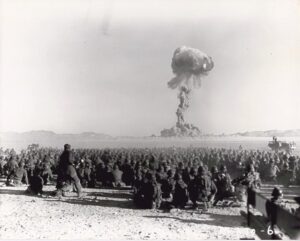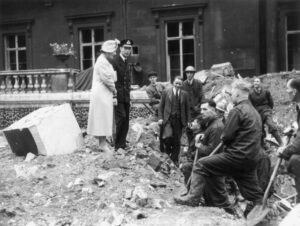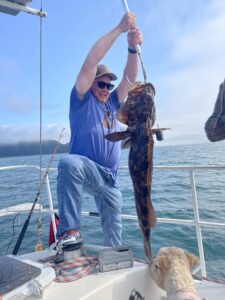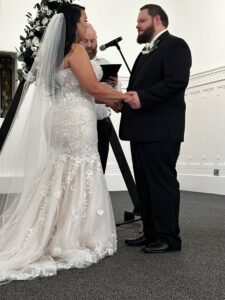family
 The Cold War, and the Soviet Union’s sudden announcement on August 30, 1961, to end a three-year moratorium on nuclear testing, brought about a shift in US policy, and a number of to nuclear test operations. One, known as Operation Fishbowl was a series of high-altitude nuclear tests in 1962 that were carried out by the United States as a part of the larger Operation Dominic nuclear test program. Flight-test vehicles were designed and manufactured by Avco Corporation. The test planned for the first half of 1962, called Bluegill, Starfish and Urraca were originally planned for the first half of 1962, but the first test attempt was delayed until June. Planning was complex, but necessary.
The Cold War, and the Soviet Union’s sudden announcement on August 30, 1961, to end a three-year moratorium on nuclear testing, brought about a shift in US policy, and a number of to nuclear test operations. One, known as Operation Fishbowl was a series of high-altitude nuclear tests in 1962 that were carried out by the United States as a part of the larger Operation Dominic nuclear test program. Flight-test vehicles were designed and manufactured by Avco Corporation. The test planned for the first half of 1962, called Bluegill, Starfish and Urraca were originally planned for the first half of 1962, but the first test attempt was delayed until June. Planning was complex, but necessary.
The launch sites were planned from Johnston Island in the Pacific Ocean north of the equator. The island was the chosen launch site, rather than the other locations in the Pacific Proving Grounds. However, the testing was not without push back. Even as early as 1958, Lewis Strauss, t hen chairman of the United States Atomic Energy Commission, opposed doing any high-altitude tests at locations that had been used for earlier Pacific nuclear tests. The motivation for concern was the fear of the flash from the nighttime high-altitude detonations might blind civilians who were living on nearby islands. Still, Johnston Island was a remote location. It was more distant from populated areas than the other potential test locations. Nevertheless, in order to protect residents of the Hawaiian Islands from flash blindness or permanent retinal injury from the bright nuclear flash, the nuclear missiles of Operation Fishbowl were launched toward the southwest of Johnston Island. The detonation part of the test would be farther from Hawaii.
hen chairman of the United States Atomic Energy Commission, opposed doing any high-altitude tests at locations that had been used for earlier Pacific nuclear tests. The motivation for concern was the fear of the flash from the nighttime high-altitude detonations might blind civilians who were living on nearby islands. Still, Johnston Island was a remote location. It was more distant from populated areas than the other potential test locations. Nevertheless, in order to protect residents of the Hawaiian Islands from flash blindness or permanent retinal injury from the bright nuclear flash, the nuclear missiles of Operation Fishbowl were launched toward the southwest of Johnston Island. The detonation part of the test would be farther from Hawaii.
The Urraca test involved about a 1 megaton yield at very high altitude of just over 621 miles. With the damage caused to satellites by the Starfish Prime detonation, the proposed Urraca test was always controversial. Because they couldn’t put the fears to rest, the Urraca test was finally canceled, and an extensive re-evaluation of the Operation Fishbowl plan as a whole was made during the 82-day operations pause after the Bluegill Prime disaster of July 25, 1962. When prime was added to a test, it indicated that the main test had failed, so when Bluegill Prime failed, it was the second test fail for that test series, which in this case (Bluegill Double Prime), ended in disaster when the Thor suffered a stuck valve preventing the flow of LOX to the combustion chamber. The engine lost thrust and unburned RP-1 spilled down into the hot thrust chamber, igniting and starting a fire around the base of the missile. Bluegill would go on to have two more tests, before they finally achieved success.

A test named Kingfish was added during the early stages of Operation Fishbowl planning. Two low-yield tests, Checkmate and Tightrope, were also added during the project, so the final number of tests in Operation Fishbowl was five. Tightrope was the last atmospheric nuclear test conducted by the United States, as the Limited Test Ban Treaty came into effect shortly thereafter. A total of Seven rockets carrying scientific instrumentation were launched from Johnston Island in support of the Tightrope test, which was the final atmospheric test conducted by the United States. I suppose testing is necessary, and I don’t know where else or how else it could be done, but the whole thing seems crazy to me. I do think that in light of this and other nuclear test disasters, care should be taken to better protect human life.

 Tablecloths…usually used to dress up a table, often for a holiday dinner these days, were not always used for that purpose. Children wiping their mouths on tablecloths isn’t generally acceptable at the dinner table these days, but that was their original use! It was like a community napkin. Guests were meant to wipe off their hands and face on a tablecloth after a messy feast, and not do this would be considered bad table manners! These days it’s pretty much the opposite. The idea is to try not to “spill” or otherwise mess up the tablecloth.
Tablecloths…usually used to dress up a table, often for a holiday dinner these days, were not always used for that purpose. Children wiping their mouths on tablecloths isn’t generally acceptable at the dinner table these days, but that was their original use! It was like a community napkin. Guests were meant to wipe off their hands and face on a tablecloth after a messy feast, and not do this would be considered bad table manners! These days it’s pretty much the opposite. The idea is to try not to “spill” or otherwise mess up the tablecloth.
While original tablecloths were usually white…another odd idea, considering the practice of wiping one’s mouth and hands with the cloth, today’s version is often colorful, and decorative to match the holiday currently being celebrated. The most common shapes for tablecloths are round, square, oval, and oblong, or rectangular, corresponding to the most common table shapes. Tablecloths usually have an overhang, referred to as the “drop” of about 6 to 15 inches on each side of the table. The shorter drop is usually for casual dining and a longer drop for more formal occasions. Sometimes a floor-length cloth is used. Custom-made tablecloths are also available, and some people choose to make their own.
Some tablecloths are just decorative, and often used on a wooden table to help protect the table from scratches and stains. Others are designed to be spread on a dining table before laying out tableware and food. In formal settings, tablecloths are designed as part of an overall table setting, with coordinating napkins, placemats, or other decorative pieces, and in very formal settings the might also be “runners” overhanging the table at two ends only and “table protectors” which provide a padded layer under a normal tablecloth.
Today’s more casual, and less expensive tablecloths are typically made of cotton, and some have a poly-cotton blend, or a PVC-coated material that can be wiped clean. Of course, any material works, and some people use delicate fabrics like embroidered silk. Today, the biggest consideration, at least in casual settings, is ease of cleanup, so the material might be chosen for its ability to fight stains.
Of course, one more use for a tablecloth, was in shows, where the tablecloth is quickly pulled from under a set table full of food. The idea is to pull it quickly enough to leave the table’s contents in place while pulling the cloth from under them. This trick relies on inertia. It is known as a tablecloth pull or a tablecloth yank. Unless 
 you are prepared for the cleanup following such a trick, I wouldn’t exactly recommend trying that one. I think most of us knew most of these uses, but maybe not the original use. Nevertheless, now you know. I would be careful using the tablecloth in that way at your next family dinner, however. It might not be appreciated.
you are prepared for the cleanup following such a trick, I wouldn’t exactly recommend trying that one. I think most of us knew most of these uses, but maybe not the original use. Nevertheless, now you know. I would be careful using the tablecloth in that way at your next family dinner, however. It might not be appreciated.
 Cheerleaders are a staple of the sporting scene. Often seen at football games, they are also at other sporting event. Still, football is the main one, but how did cheerleading get started. It wasn’t some sort of organized decision by coaches or schools, but rather it was a spontaneous action that turned into something we all know about and enjoy watching, and something that many girls (and guys too) dream about becoming.
Cheerleaders are a staple of the sporting scene. Often seen at football games, they are also at other sporting event. Still, football is the main one, but how did cheerleading get started. It wasn’t some sort of organized decision by coaches or schools, but rather it was a spontaneous action that turned into something we all know about and enjoy watching, and something that many girls (and guys too) dream about becoming.
November 2, 1898, is officially recognized as the “birth of cheerleading.” It all started at the University of Minnesota, when student Johnny Campbell directed fans in cheering on the Golden Gophers football team, cheering “Rah, Rah, Rah! Ski-u-mah, Hoo-Rah! Hoo-Rah! Varsity! Varsity! Varsity, Minn-e-So-Tah!” That made Campbell the very first cheerleader. The whole thing was so well received, that soon after that, the University of Minnesota organized a “yell leader” squad of six male students, who still use Campbell’s original cheer today. Good thing the name “yell squad” didn’t take!! Prior to Campbell’s date with history, cheering existed, of course, just not in this new form. Prior to November 2, 1898, the fans  cheered at the game…meaning they yelled, screamed, and jumped up and down. Fans that would start cheers in the stands were called “cheerleaders,” on an unofficial basis, but they really weren’t officially leaders, just initiators. That day however, Campbell made history when he jumped down in front of the fans to lead an organized cheer.
cheered at the game…meaning they yelled, screamed, and jumped up and down. Fans that would start cheers in the stands were called “cheerleaders,” on an unofficial basis, but they really weren’t officially leaders, just initiators. That day however, Campbell made history when he jumped down in front of the fans to lead an organized cheer.
I don’t think everyone realizes just how important the cheerleaders are. Sometimes, when the game seems lost, the cheerleaders are solely responsible for lifting the spirits of fans and players alike. Sometimes, it encourages the players to press on, and other times it just tells them, “We love you anyway.” Today, most high school, college, and  professional sports teams have cheerleaders, with a few notable exceptions. The Cleveland Browns famously or infamously do not and never have had cheerleaders, and for this year neither do the Bills, Bears, Chargers, Giants, Packers, or Steelers. The Dallas Cowboy cheerleaders are probably one of the most famous of cheerleading organizations and for them it is a seriously big production. Tryouts are rigorous and highly competitive. The cheerleading squads these days are bigger than they used to be too. There are also competitions that are held each year too. It is now considered a sport in most schools. In fact, in the colleges, the cheerleaders have to sign a contract to be there and plan to stay with it for the entire season. Usually, there are scholarships attached to cheerleading, and the practice session and games are mandatory, with strict rules on allowed absences. Cheerleaders are an important aspect of college sports, and the squads must be dedicated. Cheerleading has come a long way since 1898, and I think most people would agree, that it’s been a good thing.
professional sports teams have cheerleaders, with a few notable exceptions. The Cleveland Browns famously or infamously do not and never have had cheerleaders, and for this year neither do the Bills, Bears, Chargers, Giants, Packers, or Steelers. The Dallas Cowboy cheerleaders are probably one of the most famous of cheerleading organizations and for them it is a seriously big production. Tryouts are rigorous and highly competitive. The cheerleading squads these days are bigger than they used to be too. There are also competitions that are held each year too. It is now considered a sport in most schools. In fact, in the colleges, the cheerleaders have to sign a contract to be there and plan to stay with it for the entire season. Usually, there are scholarships attached to cheerleading, and the practice session and games are mandatory, with strict rules on allowed absences. Cheerleaders are an important aspect of college sports, and the squads must be dedicated. Cheerleading has come a long way since 1898, and I think most people would agree, that it’s been a good thing.

 Our government has been known, in its history, to do some things that really were underhanded, and in some cases horrific. The “need” for nuclear bombs naturally facilitated the need for nuclear testing. I think everyone knows that would had to have happened, but on November 1, 1951, the US Army conducted nuclear tests in the Nevada desert that included a “diabolical exercise in which 6500 US Army troops were exposed to the effects of a nearby nuclear detonation and its associated radiation.” When I read that, I was furious. They knew what they were doing, and they did it as an experiment…just to see what would happen to those poor men.
Our government has been known, in its history, to do some things that really were underhanded, and in some cases horrific. The “need” for nuclear bombs naturally facilitated the need for nuclear testing. I think everyone knows that would had to have happened, but on November 1, 1951, the US Army conducted nuclear tests in the Nevada desert that included a “diabolical exercise in which 6500 US Army troops were exposed to the effects of a nearby nuclear detonation and its associated radiation.” When I read that, I was furious. They knew what they were doing, and they did it as an experiment…just to see what would happen to those poor men.
It was called Operation Buster–Jangle. The US Army conducted a series of 7 nuclear tests, that included the November 1st test. In that involuntary one test, the 6500 troops, were dug in foxholes and trenches only 6 miles from an air burst nuclear bomb of 21 kilotons yield. That is about the size of the Nagasaki bomb!! After the soldiers felt the hot nuclear wind blast over them, the wind deposited desert dust in choking clouds upon the men. Then, the soldiers were ordered to get up and march across the blast site to within 900 meters (a little over ½ a mile) of the nuclear “ground zero.” That is incredibly close, and those men were exposed.
The damage done to those men was not well documented, but the US Government later passed the 1990 Radiation Exposure Compensation Act (RECA) to compensate the military veterans exposed to nuclear testing in the 1950’s. The passing of that act is implied acknowledgment of the responsibility of the US government in long term health problems experienced by those troops…without actually placing the blame, and therefore opening the government up to future lawsuits. Basically, the men, were they still alive, or their families, if not, 
 could theoretically be compensated for their losses. Of course, as many of us have seen with these kinds of cases, the process is very slow, the burden of proof for the men trying to receive compensation is heavy, and the final payout is usually quite low. RECA has awarded over $2.4 billion in benefits to more than 37,000 claimants since its inception in 1990. Still, that’s a small price to pay for the destruction of so many lives.
could theoretically be compensated for their losses. Of course, as many of us have seen with these kinds of cases, the process is very slow, the burden of proof for the men trying to receive compensation is heavy, and the final payout is usually quite low. RECA has awarded over $2.4 billion in benefits to more than 37,000 claimants since its inception in 1990. Still, that’s a small price to pay for the destruction of so many lives.
 During World War II, the Third Reich run by Adolf Hitler was at war with the world, but at that point, mostly with the British, and especially the British Royal Family. There were a number of bombing campaigns that devastated London, but it was the attack of September 13, 1940, that managed to hit the mark that Hitler would consider, the jackpot. That bombing managed to hit Buckingham Palace. upon hearing that, I wondered, “Where was the family?” Many people tried to leave London, if they had the means. Many of the children were hidden on the country. The rest of the people hid wherever they could…in places like subway tunnels and such. Pretty much everyone had their windows blacked out at night, so that unless there was a moon, homes were well hidden. That summer the German army ramped up their attacks on Britain. London was the prime target of the pounding by the Luftwaffe. Called “The Blitz” attacks, the bombings were very damaging…destroying much of London’s infrastructure.
During World War II, the Third Reich run by Adolf Hitler was at war with the world, but at that point, mostly with the British, and especially the British Royal Family. There were a number of bombing campaigns that devastated London, but it was the attack of September 13, 1940, that managed to hit the mark that Hitler would consider, the jackpot. That bombing managed to hit Buckingham Palace. upon hearing that, I wondered, “Where was the family?” Many people tried to leave London, if they had the means. Many of the children were hidden on the country. The rest of the people hid wherever they could…in places like subway tunnels and such. Pretty much everyone had their windows blacked out at night, so that unless there was a moon, homes were well hidden. That summer the German army ramped up their attacks on Britain. London was the prime target of the pounding by the Luftwaffe. Called “The Blitz” attacks, the bombings were very damaging…destroying much of London’s infrastructure.
Well, the Royal Family certainly had the means to get out, so I assumed that they were in Scottland or somewhere when all this took place. As the leaders of the country, it would certainly make sense to get them to  safety. Nevertheless, when Buckingham Palace was bombed on September 13, 1940, Queen Elizabeth and King George VI were there. On that morning they were relaxing with a cup of tea, when they heard the ‘unmistakable whirr-whirr of a German plane’ and the ‘scream of a bomb’ that was followed by a rumble and a crash. A German raider had dropped five high explosive bombs on the Palace. The areas hit were the Royal chapel, inner quadrangle, Palace gates, and the Victoria memorial. Four members of the Palace staff were injured, one of whom died. Thankfully, the King and Queen went unharmed in the incident. Queen Elizabeth said in a poignant statement, ‘I am glad we have been bombed. It makes me feel I can look the East-End in the face.’ I’m sure he was just trying to be brave, because they were obviously quite shaken up. Her stance strengthened the reputation of the Royal Family in the eyes of the British public.
safety. Nevertheless, when Buckingham Palace was bombed on September 13, 1940, Queen Elizabeth and King George VI were there. On that morning they were relaxing with a cup of tea, when they heard the ‘unmistakable whirr-whirr of a German plane’ and the ‘scream of a bomb’ that was followed by a rumble and a crash. A German raider had dropped five high explosive bombs on the Palace. The areas hit were the Royal chapel, inner quadrangle, Palace gates, and the Victoria memorial. Four members of the Palace staff were injured, one of whom died. Thankfully, the King and Queen went unharmed in the incident. Queen Elizabeth said in a poignant statement, ‘I am glad we have been bombed. It makes me feel I can look the East-End in the face.’ I’m sure he was just trying to be brave, because they were obviously quite shaken up. Her stance strengthened the reputation of the Royal Family in the eyes of the British public.
This wasn’t the first attempt to take out the palace. Days earlier, on September 8th, a 50-kilogram bomb fell on the grounds of the Palace. That one malfunctioned, and didn’t explode, so it was later destroyed in a controlled explosion. Of course, the British Foreign Office immediately recommended that the family should leave the country for a time after the second bomb did so much damage, they refused, and it was viewed as a deep  “courage and a commitment to the United Kingdom” that the public appreciated. The Queen went on to say that “The children will not leave unless I do. I shall not leave unless their father does, and the King will not leave the country in any circumstances, whatever. So, it was settled. This act of defiance in the face of the German Blitz gave the country a much-needed boost in their war efforts. The people felt like they were not alone, and they gained a sense of unity throughout the United Kingdom. All of this happened during the Battle of Britain, which began on July 10, 1940. I would say that the efforts were greatly increased, because it ended on October 31, 1940, with a British victory.
“courage and a commitment to the United Kingdom” that the public appreciated. The Queen went on to say that “The children will not leave unless I do. I shall not leave unless their father does, and the King will not leave the country in any circumstances, whatever. So, it was settled. This act of defiance in the face of the German Blitz gave the country a much-needed boost in their war efforts. The people felt like they were not alone, and they gained a sense of unity throughout the United Kingdom. All of this happened during the Battle of Britain, which began on July 10, 1940. I would say that the efforts were greatly increased, because it ended on October 31, 1940, with a British victory.

 My nephew, Matt Miller joined our family when he married my niece, Michelle (Stevens) Miller on August 14, 2021. They had been best friends since junior high, and later they knew that theirs was far more than a friendship…it was forever. Since their marriage, they have had many amazing times, and things just keep getting better. This year, Matt was promoted to shovel operator at the North Antelope Rochelle Mine where he works. He has really been enjoying that.
My nephew, Matt Miller joined our family when he married my niece, Michelle (Stevens) Miller on August 14, 2021. They had been best friends since junior high, and later they knew that theirs was far more than a friendship…it was forever. Since their marriage, they have had many amazing times, and things just keep getting better. This year, Matt was promoted to shovel operator at the North Antelope Rochelle Mine where he works. He has really been enjoying that.
Matt’s brother, Mikey lives in Soldotna, Alaska, and the Miller family decided to make a trip to visit. The whole  family went, and they all had a great time. Mikey has a sailboat, and with Alaskan fishing what it is, well you know they had to go fishing. Just going to Alaska is an amazing trip, as anyone who has been there can tell you. Now I don’t know if I would be one to live there year-round, but I would like to see both extremes…the sun that never sets, and the sun that never rises. With family living up there, Matt and Michelle might have that opportunity, which I think is very cool. While they were in Alaska, that sailboat called their name on a regular basis. For Michelle, going out on the sailboat was incredible. The views were amazing, and she could just relax and enjoy, and the boys did LOTS of fishing. Matt caught a huge ling cod! He and Michelle came home with a bunch of salmon too. Of course, they didn’t spend all their time fishing, or at least I hope they didn’t, because Alaska has lots of stunning views, and since it was July, they had plenty of daylight hours to explore, and even into the nighttime,
family went, and they all had a great time. Mikey has a sailboat, and with Alaskan fishing what it is, well you know they had to go fishing. Just going to Alaska is an amazing trip, as anyone who has been there can tell you. Now I don’t know if I would be one to live there year-round, but I would like to see both extremes…the sun that never sets, and the sun that never rises. With family living up there, Matt and Michelle might have that opportunity, which I think is very cool. While they were in Alaska, that sailboat called their name on a regular basis. For Michelle, going out on the sailboat was incredible. The views were amazing, and she could just relax and enjoy, and the boys did LOTS of fishing. Matt caught a huge ling cod! He and Michelle came home with a bunch of salmon too. Of course, they didn’t spend all their time fishing, or at least I hope they didn’t, because Alaska has lots of stunning views, and since it was July, they had plenty of daylight hours to explore, and even into the nighttime, 
 when the sun barely sets. That is really very cool!!
when the sun barely sets. That is really very cool!!
Matt went elk hunting on the opening day of archery hunting the year. He got a really nice elk, on that first day. That isn’t something that always happen, and Matt was very excited about that. Matt loves hunting, fishing, and any other form of outdoor sports. He also loves to watch sports, and this year has been a banner year…except for the Broncos. Matt is a Broncos fan, and he as it has been for all of the Broncos fans (I’m one), their losing streak has been extremely disappointing. The good news is that things appear to be looking up. I guess we will see how the rest of the season goes. Today is Matt’s birthday. Happy birthday Matt!! Have a great day!! We love you!!

 Yesterday, in front of family and friends, my niece, Lacey Stevens married the love of her life, Chris Killinger. The ceremony was beautiful, personalized, and sweetly relaxed. Her brother, Garrett Stevens had become ordained to marry, and he performed the ceremony. In many ways, that made the ceremony as sweet as it was. It wasn’t stiff, but was rather comfortable, and even included a little giggling, as a little humor graced the day. It was a beautiful blend of happiness, ceremony, and relaxed humor. As for Lacey’s new husband, well…Chris was so emotional at seeing his bride, that he cried. Some people might think that odd, but it was…perfect. I loved the idea of seeing our new nephew so taken with the woman he had chosen, that he couldn’t stop the tears. I know Lacey and her family would agree with me when I say that it was a beautiful moment.
Yesterday, in front of family and friends, my niece, Lacey Stevens married the love of her life, Chris Killinger. The ceremony was beautiful, personalized, and sweetly relaxed. Her brother, Garrett Stevens had become ordained to marry, and he performed the ceremony. In many ways, that made the ceremony as sweet as it was. It wasn’t stiff, but was rather comfortable, and even included a little giggling, as a little humor graced the day. It was a beautiful blend of happiness, ceremony, and relaxed humor. As for Lacey’s new husband, well…Chris was so emotional at seeing his bride, that he cried. Some people might think that odd, but it was…perfect. I loved the idea of seeing our new nephew so taken with the woman he had chosen, that he couldn’t stop the tears. I know Lacey and her family would agree with me when I say that it was a beautiful moment.
When Lacey met Chris, as with any new relationship, she didn’t know where this would lead. Nevertheless, she 
 knew that she was taken with the nice man, who treated her with love and respect immediately. They are so perfect for each other. They like the same things, and they are heading in the same direction. The great news is that they now have a wonderful companion with whom to share the road of life. Chris brought some things to the marriage that were unexpected, but things Lacey needed. Lacey wanted to start her own salon (Lacey is a Cosmetologist and now the owner of LuxLou Beauty) and Chris encouraged her to do so. He even helped advertise for her. Chris has a very different career than Lacey (office and purchasing manager for Atlas Aero Service at Natrona County International Airport). Many guys would think that pushing a beauty salon would be…not in their wheelhouse, but Chris is so proud of Lacey’s accomplishments. Lacey brought some things too, especially in light of Chris’ two children, Brooke and Jaxon. Lacey brought a heart big enough to embrace her bonus children. It has been a wonderful thing for everyone. The kids love Lacey very much, and the cousins, Elliott and Maya Stevens, they gained from the relationship. Of course, that wasn’t all either one of them
knew that she was taken with the nice man, who treated her with love and respect immediately. They are so perfect for each other. They like the same things, and they are heading in the same direction. The great news is that they now have a wonderful companion with whom to share the road of life. Chris brought some things to the marriage that were unexpected, but things Lacey needed. Lacey wanted to start her own salon (Lacey is a Cosmetologist and now the owner of LuxLou Beauty) and Chris encouraged her to do so. He even helped advertise for her. Chris has a very different career than Lacey (office and purchasing manager for Atlas Aero Service at Natrona County International Airport). Many guys would think that pushing a beauty salon would be…not in their wheelhouse, but Chris is so proud of Lacey’s accomplishments. Lacey brought some things too, especially in light of Chris’ two children, Brooke and Jaxon. Lacey brought a heart big enough to embrace her bonus children. It has been a wonderful thing for everyone. The kids love Lacey very much, and the cousins, Elliott and Maya Stevens, they gained from the relationship. Of course, that wasn’t all either one of them 
 brought to the marriage. One of the greatest things they brought to the marriage is their friendship with each other. They are so kind and loving to each other, and they have the same ideas in mind for the future.
brought to the marriage. One of the greatest things they brought to the marriage is their friendship with each other. They are so kind and loving to each other, and they have the same ideas in mind for the future.
Their wedding was the culmination of the love that has grown between these two wonderful people, and we are so happy for them both. I’m excited to see where life takes them as they begin this wonderful journey together. I know that they will always be happy, because they are perfect for each other. Congratulations of your marriage Lacey and Chris. We wish you the very best life has to offer and claim God’s greatest blessing for you all. Introducing Mr and Mrs Killinger!! We love you!!

 My nephew, Chris Kirk joined our family when he married my niece, Siara Harman on July 23, 2022. Recently, Chris and Siara bought a house, and they have been spending time fixing it up to be the way they want it to be. Owning a home has long been a dream for Chris. He likes working on things, and you just can’t in an apartment. So, he has really enjoyed working on things, and basically doing all the “handy man stuff” that he couldn’t before. So far, he has painted the house with Siara’s mom and dad, Chantel and Dave Balcerzak. They have also sanded floors, fixed toilets, put blinds up, and added transitions. Siara tells me that “He will be doing a lot more, but he is doing great and being so patient with it all!!” Much of these things were things that Siara couldn’t really help with, because they are expecting their first child together.
My nephew, Chris Kirk joined our family when he married my niece, Siara Harman on July 23, 2022. Recently, Chris and Siara bought a house, and they have been spending time fixing it up to be the way they want it to be. Owning a home has long been a dream for Chris. He likes working on things, and you just can’t in an apartment. So, he has really enjoyed working on things, and basically doing all the “handy man stuff” that he couldn’t before. So far, he has painted the house with Siara’s mom and dad, Chantel and Dave Balcerzak. They have also sanded floors, fixed toilets, put blinds up, and added transitions. Siara tells me that “He will be doing a lot more, but he is doing great and being so patient with it all!!” Much of these things were things that Siara couldn’t really help with, because they are expecting their first child together. 
Adding to their family is a big step, and Chris wants to be ready in every way. He has been taking on a lot of extra shifts at work to keep us on top and set for their sweet baby. That is huge, because he wants to be able to relax, knowing that he had made everything ready for him and Siara, since she will have some time off work after the baby arrives. Siara tells me that Chris is the hardest worker she knows. Chris is really enjoying all the “baby changes” in Siara. Feeling the baby kicking is one of his favorite things to do. Siara feels so comfortable that Chris is going to be a great dad and provider for their little family, now and on into the future, as they add to their family later on.
Chris is so good to his in-laws too. He enjoys doing thing for them, and with them. They all get along so well. Chris is a friendly sort of guy and wants to fit in well with the family he married into. He and Siara’s brother, 
 Jake Harman and his family get along great too. Siara and Jake are close, so knowing that her husband and brother are friends is comforting too. They all went hiking a number of times over the summer and had a great time. I think Chris is one of those people who gets along well with everyone…someone who never met a stranger, and someone that people want to be around. At least, that is what I get from anyone who knows him. Today is Chris’ birthday. Happy birthday Chris!! Have a great day!! We love you!!
Jake Harman and his family get along great too. Siara and Jake are close, so knowing that her husband and brother are friends is comforting too. They all went hiking a number of times over the summer and had a great time. I think Chris is one of those people who gets along well with everyone…someone who never met a stranger, and someone that people want to be around. At least, that is what I get from anyone who knows him. Today is Chris’ birthday. Happy birthday Chris!! Have a great day!! We love you!!



